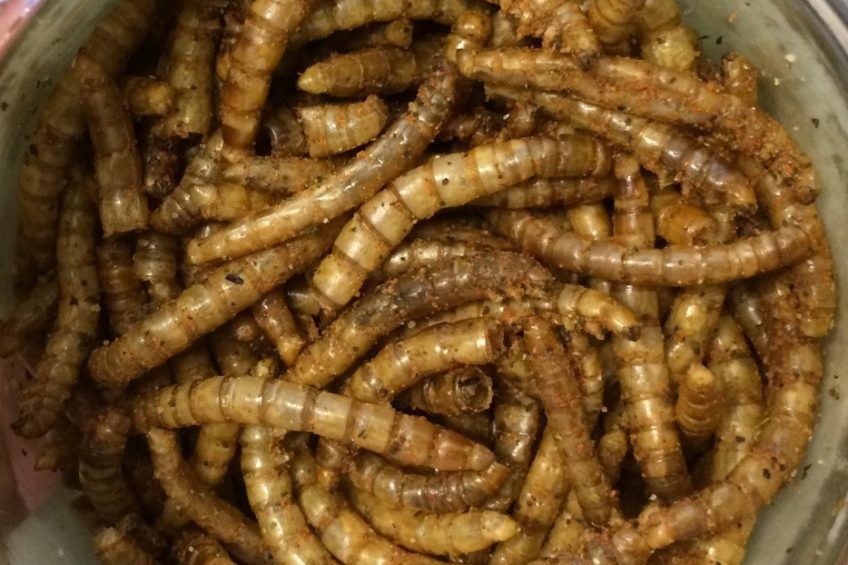What will we feed pigs in the future?

Which are the promising new feed sources and strategies to reduce pressure on natural resources while feeding or producing feed for pigs and poultry? This is the ambitious question that a new EU expert focus group aims to answer. Expert Edgar Garcia Manzanilla participated and shares his views about the 1st meeting.
At this point, everybody has heard about the expected increase in the world population by 2050 and of course the pressure to produce more meat and to find new sustainable feedstuffs is building up. This is an opportunity for pigs to recover their historical role as recyclers, although the scale may be a little bit bigger than it used to be when our grandmothers fed the daily left overs to the pigs.
There are literally hundreds of materials that could be used as feedstuffs for pigs directly or after some processing. However restrictions in availability, homogeneity, supply, price or safety make finding new feedstuffs a challenging task. That is why the EU decided set up this group, to find the way to speed up the use of alternative ingredients in pigs and reduce EU dependence on ingredients like soy.
What is the ideal ingredient of the future?
A starting point was to decide, what are we looking for? Well, for this expert group, new feed ingredients for pigs should meet as many of the requirements listed below as possible:
- Moderate to high protein content;
- Good protein digestibility and nutritionally relevant amino acid profile;
- Moderate to high content of relevant micronutrients;
- Limited content of anti-nutritional factors;
- Health-benefiting properties;
- Sustainable production (this may also cover ethics); and
- Competitive price (comparable to soybean meal but also fishmeal in some cases).

And following these requirements these are the main candidates discussed by the expert group.
Industry residuals and former food, and endless variety
This category includes a huge range of feed candidates which vary throughout the region. From a legal perspective, only those of vegetable origin are eligible for pigs and, in general, these are ingredients rich in carbohydrates like bakery products, sweets, snacks or horticultural products.
Exceptions are brewery products that have higher protein content. Many of these products are already used even if it is only locally but there is still great potential to refine the processes and increase circularity. In the meeting, Kees van Gorp from FeedValid presented some impressive technologies that make the use of these ingredients a reality.
Aquatic biomass, the rising star
This is a very promising group but their use in pigs has not been well studied. Aquatic biomass includes a range of plant and micro- and macro algae species, like duckweed, with high protein levels (50-60%), amino acid profiles similar to soy bean meal and interesting contents in omega-3 fatty acids and micronutrients.
At the moment there is quite a few projects investigating these ingredients and the full scale development is expected to take 5 to 10 more years.
Single cell protein (SCP), the come back
Single cell protein production result from processes recycling products using microbial systems to produce feed. The protein content of such products ranges from 10-50% for fungal SCP and 50-80% for bacterial SCP and both have good amino acid profiles.
Professor Ilias Kyriazakis reminded to the group of the importance of not repeating the errors from the past with failed examples from the 1980s like Pruteen. In any case, technology has improved dramatically in the last 15 years and new options are available.
The expert group had the opportunity to check out the latest advances in this area visiting the Finnish research institute LUKE where researchers are exploring the use of wood savings to extract glucose and use it to produce SCP.
Insects, will they ever be feed?
Some of the experts in the group are convinced that this is the group of feedstuff with more potential. Among those is entrepreneur Daniel Murta who presented to the group the recycling plant that he has created in Portugal using insects.

Black soldier fly, yellow mealworm and lesser mealworm are probably the insects with the biggest potential to be produced cost-efficiently with protein contents of 40-60% and amino acid profiles comparable to soybean meal. This production is still in its infancy but has made giant steps in the last years and it will be very exciting to see development in the near future.
Be aware of the opportunities through the EIP-AGRI
This group is part of the new EU approach to research and innovation, the European Innovation Partnerships (EIPs). These are challenge-driven initiatives focused on societal needs. EIPs uses expert focus groups like the one presented here to identify research and innovation priorities and make available funding through the different EU schemes.
One scheme of special interest is the operational groups. Do you have an idea you think is worth exploring to solve a particular problem? Would you like to get some funding to develop it but don’t know how? Look at your national rural development plan and you will be surprised of the possibilities that operational groups offer. There are some amazing ideas from this programme on their website.











